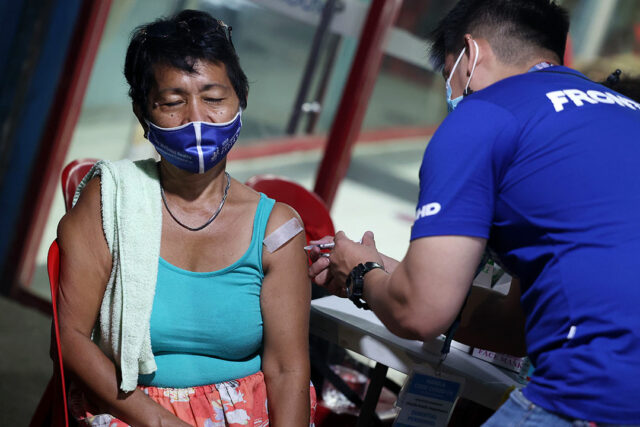Exploring the Philippines’ fastest fixed networks
Digital transformation has enabled growth and development across industries globally. E-commerce platforms and online marketplaces have become essential in retail, digital features are added in banking and financing, and the workforce is going digital as well. Making all these possible is the internet, which has become more of a lifeline for both individuals and businesses at present. It is important, therefore, for internet service pro-viders (ISPs) to constantly deliver connectivity at reliable speeds and avoid as much interruption and outages as possible.
As of January 2024, according to global connectivity intelligence Ookla, the Philippines recorded an average fixed broadband upload speed of 93.05 megabits per second (Mbps) and a download speed of 93.31 Mbps in January 2024. This quite exceeds what online reference library DataReportal indicated (also citing data published by Ookla) as the expected internet speed of internet users in the Philippines at the start of 2024, which is 92.19 Mbps.
DataReportal added that Ookla’s data shows that fixed internet connection speeds in the Philippines increased by 10.71 Mbps, or by 13.1%, in the twelve months to the start of 2024.
However, the 2023 edition of the Worldwide Broadband Speed League by price comparison site Cable.co.uk ranked the Philippines 86th out of 220 countries and territories even as its average download speed improved by 11.76 Mbps to 43.36 Mbps. The said speed was found slower than the Asian average of 45.72 Mbps.
Ookla’s Speedtest Awards report for the Philippines show that among ISP, particularly in the fixed internet category, Converge ICT Solutions, Inc. (Converge) takes the lead for the third and fourth quarters of last year with a “Speed Score” of 123.18, followed by PLDT Home Fiber at 119.98, and Globe at 88.50.
To determine the fastest internet carriers, Ookla uses speed scores, which consider upload speeds (20% of the score) and download (80% of the score) speeds. These scores are calculated using a modified trimean, which combines speeds at the 10th percentile, 50th percentile (median), and 90th percentile. By prioritizing download and median speeds, Ookla aims to capture the daily user experience of these network providers.
Fixed networks, or fixed-line networks, is defined by Thomson Reuters as wired networks which are usually made of copper paired wires or fiber optic cables and are used for voice and data communications through which a user can make phone calls or connect to the internet.
During the last quarter of 2023, Converge solidified its position as the top fixed network in the country. With a speed score of 123.18, Converge achieved remarkable top download speed of 457.56 Mbps and top upload speed of 448.15 Mbps. It also scored trimean download and upload speeds of 123.36 Mbps and 122.46 Mbps, respectively.
Additionally, Converge was also awarded the best internet gaming experience, top-rated fixed network, and best video experience in the Philippines’ Speedtest Awards by Ookla.
According to Converge, which provides fiber optic speed internet services nationwide, its network spans 682,000 kilometers, making it the largest fiber network in the country with almost 7.9 million fiber ports, reaching two million residential subscribers in 2023.

Meanwhile, PLDT’s Home Fiber delivered a Speed Score of 119.98, according to Ookla with top download and top upload speeds of 400.09 Mbps and 407.53 Mbps, respectively. Its trimean download speed is 120.28 Mbps, while its upload speed is 118.80 Mbps.
According to 2023 figures, PLDT’s fiber infrastructure has spanned over 1.1 million kilometers, while its total number of fiber ports rose to 6.15 million, covering over 18,000 barangays nationwide.
Another major telco player, Globe Telecom, Inc. (Globe) ranked third in Ookla’s Speedtest Awards rankings of top fixed networks, garnering a Speed Score if 88.50, with top download speed of 284.43 Mbps and top upload speed of 264.55 Mbps. Its trimean download and upload speeds are 89.40 Mbps and 84.91 Mbps, respectively.
Globe was also recently recognized for network reliability. A survey by intelligence firm Standard Insights Consumers’ Awards showed that Globe is a top choice, recognizing it as a leader in network reliability.
Improving internet services
Moving forward, the aforementioned ISPs aim to expand and develop more high-quality network solutions and services in the country.
Converge, for its part, aims to boost the digital landscape and global connectivity in the Philippines through investments. Such investments are expected to significantly enhance the country’s internet capacity, bandwidth, and network diversity.
Among these investments is the first trans-Pacific cable called the Bifrost Cable System, which connects Southeast Asia to the west coast of North America, and the SEA-H2X Submarine Cable System, that directly connect the Philippines to Hong Kong and Singapore, as well as Hong Kong to Singapore.
“As a company dedicated to digital transformation and providing world-class internet services, Converge reaffirms its commitment to serving the unserved and underserved, constantly expanding its fiber broadband backbone, and offering the fastest, most innovative, reliable, and value-for-money products and services,” Converge said in a statement.
PLDT is looking to expand its Gigabit Fiber plan to Cebu and Davao this year. With the growing digital landscape, customers will demand faster and more reliable internet connections, resulting in PLDT’s fiber plan becoming more mainstream in the years ahead.
“Gigabit Fiber… is a little bit more expensive than the average. That’s true. Like all new technologies and all the changes, it starts off in a certain segment. It is something that will start off in the premium segment, but we are looking forward to it over time, actually making its way to becoming a very mainstream product,” PLDT Senior Vice-President and Head of Consumer Business Jeremiah M. de la Cruz said.
Globe said it will further expand its broadband business, as it continues to ride a wave of remarkable growth in broadband revenues from the previous year. Its fiber broadband revenues increased by 18%, thanks to the rising demand for internet access in the country.
“We’re seeing an encouraging uptrend in our fiber broadband business, and our commitment to delivering exceptional service is stronger than ever,” Globe Telecom Vice-President and Head for Brand Management, Broadband Business Raymond Policarpio said in a media release.
“Our focus is not just on expanding our reach but also on acquiring quality subscribers who value longevity and reliability,” Mr. Policarpio said.
“This unlimited prepaid fiber service offers cost-effective options for superior connectivity, ensuring that high-speed internet is within everyone’s reach,” Globe added. — Angela Kiara S. Brillantes




















